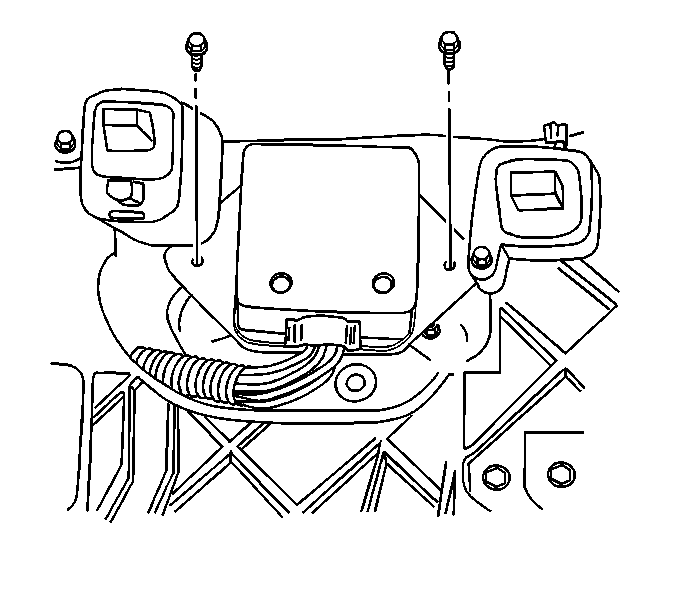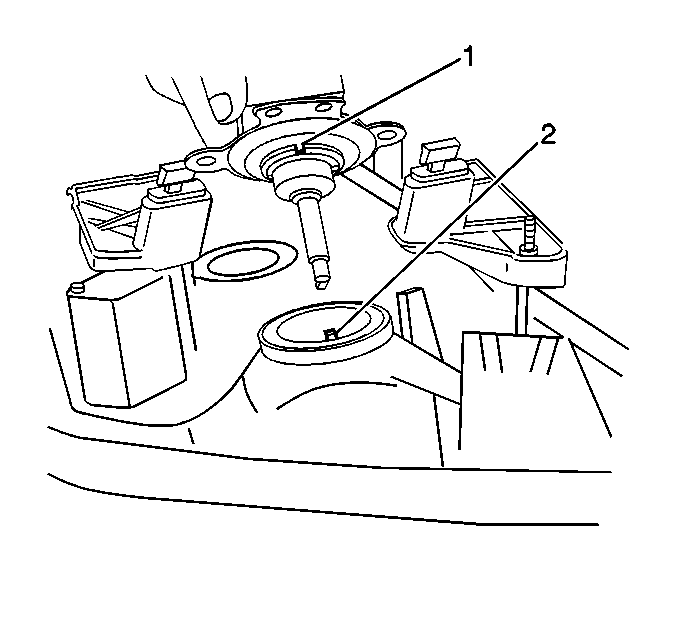High Intensity Discharge Headlamp Starter/Arc Tube Replacement Philips
Removal Procedure
Caution: The high intensity discharge system produces high voltage and current.
To reduce the risk of severe shocks and burns:
• Never open the high intensity discharge system ballast or the
arc tube assembly starter. • Never probe between the high intensity discharge system ballast
output connector and the arc tube assembly.
Caution: The high intensity discharge system produces high voltage and current. In order to reduce the risk of severe shocks and burns, the battery negative cable must be disconnected any time service work is being performed on or around the high intensity discharge system.
Notice: When removing or replacing the arc tube, the arc tube must not contact the side of the headlamp housing or the bulb shield. Damage to the arc tube may result.
- Disconnect the battery negative cable.
- Remove the headlamp. Refer to High Intensity Discharge Headlamp Replacement .
- Remove the arc tube with starter retaining screws from the headlamp housing.
- Remove the arc tube with starter from the headlamp housing.
- Remove and retain the spiral electromagnetic interference (EMI) shield from the headlamp housing.

Caution: Unless directed otherwise, the ignition and start switch must be in the OFF or LOCK position, and all electrical loads must be OFF before servicing any electrical component. Disconnect the negative battery cable to prevent an electrical spark should a tool or equipment come in contact with an exposed electrical terminal. Failure to follow these precautions may result in personal injury and/or damage to the vehicle or its components.
Installation Procedure
- Install the spiral electromagnetic interference (EMI) shield to the headlamp housing.
- Install the headlamp starter assembly to the headlamp. Ensure that the alignment notch (1) and tab (2) are lined up.
- Install the starter/arc tube retaining screws to the headlamp housing.
- Tighten the starter/arc tube screws to 0.5 N·m (4.5 lb in) on the first pass.
- Tighten the starter/arc tube screws to 1 N·m (9 lb in) on the second pass.
- Install the headlamp to the vehicle. Refer to High Intensity Discharge Headlamp Replacement .
- Connect the battery negative cable.

Important: The headlamp starter must be held perfectly straight to the headlamp housing, apply pressure downward to compress the spiral electromagnetic interference shield with the headlamp starter as the 3 screws are replaced. The headlamp starter and arc tube assembly also has a tendency to tilt to 1 side because of the spiral electromagnetic interference shield.

Notice: The correct tightening sequence must be followed. If the correct sequence is not followed, the headlamp components may warp and cause premature failure of the system.
Notice: Use the correct fastener in the correct location. Replacement fasteners must be the correct part number for that application. Fasteners requiring replacement or fasteners requiring the use of thread locking compound or sealant are identified in the service procedure. Do not use paints, lubricants, or corrosion inhibitors on fasteners or fastener joint surfaces unless specified. These coatings affect fastener torque and joint clamping force and may damage the fastener. Use the correct tightening sequence and specifications when installing fasteners in order to avoid damage to parts and systems.
Important: Follow the correct tightening sequence. Use GM P/N 12346067 or Loctite® 380/410 on these fasteners or in the headlamp housing screw holes.
Tighten
Important: The starter cable routing from the starter/arc tube to the ballast is between the headlamp mounting bracket and the back of the headlamp housing. The starter cable must be routed between the vertical adjuster and the center pivot in order to provide proper clearance.
